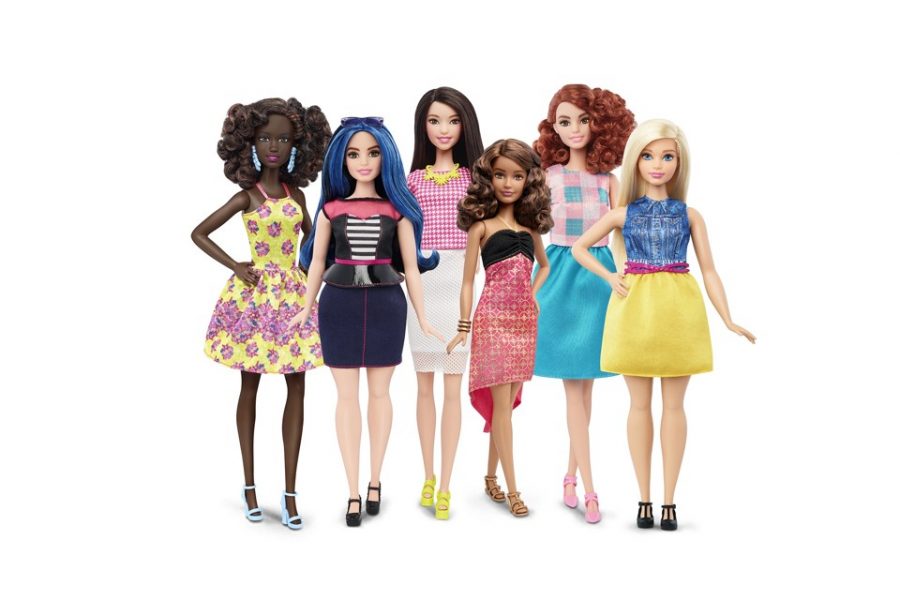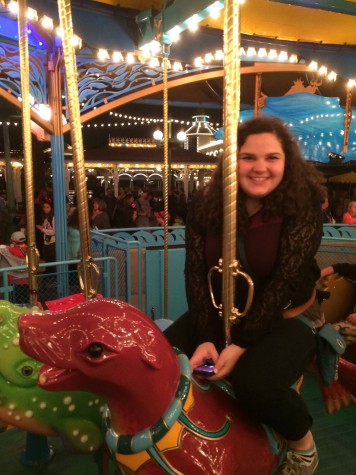Barbie’s standards for beauty affect children’s perceptions on the world
April 27, 2016
For every little girl, Barbie is the quintessential embodiment of beauty and perfection. Barbie has it all—from platinum blonde locks, flawless, chaste skin, a waist the size of her wrist to plastic boobs, permanently slanted feet, and a chipper Chihuahua in tow, there’s not much else that a girl could want. With the pressures to meet the current “trending” body type and the overwhelming white dominance in the media, you might just find yourself asking, “Doesn’t everyone want to be a Barbie girl?”
Mattel, the maker of Barbie, has long-been criticized for its lack of diversity within its dolls and for the unrealistic body standards and proportions traditional Barbie dolls promote. Up until recently, Mattel’s selection of Barbie dolls was embarrassingly limited in terms of diversity, and sales had dropped because of it. Recently, however, Mattel’s “Project Dawn” unleashed a vastly divergent Barbie line, showcasing three new body types (ranging from tall to petite to curvy) and seven different skin tones. These improvements also include a variety of contemporary hair styles and textures, and boast the addition of flat feet. According to Mattel spokeswoman, Michelle Chidoni, the new dolls allow “the product line to be a better reflection of what girls see in the world around them.”
Mattel decided to make a change after a tumultuous drop in popularity and new ownership of long-lived traditions, sparked by social media. “Kids are bombarded with images that are really just not true to nature. It can potentially damage your self-esteem or limit your world view,” said Florence Williams, George Washington University scholar. For that, Mattel prompted immediate response. Project Dawn was instilled because “we believe we have a responsibility to girls and parents to reflect a broader view of beauty,” said Senior Vice President and Global General Manager of Barbie, Evelyn Mazzocco. This change is expected to positively impact perspectives and influences on body image.
According to Mirror Mirror, an organization that promotes eating disorder awareness, traditional Barbie would have severe health complications if she was real. The iconic doll’s proportions would translate to a height of 5’9” and a weight of 120 pounds, leaving her unable to hold up her lopsided head. Even more shockingly, Barbie’s fat content would be so low that she would not be able to menstruate.
With these disturbing proportions, the doll’s dire impact on children has long-since been called into question. According to a study conducted in 2006 by Helga Dittmar, girls who played with Barbie experienced a greater desire to be thin and reported lower body image than those who did not play with Barbie. Another study showed that one half of women aged 18-25 would rather be run over by a truck than be overweight, as stated by North Dakota State University. In fact, paired with the statistic that children as young as six can be affected by body dysmorphia, many studies have linked toys with the influence of current and future self-worth. “The Doll Test,” a study conducted by Drs. Kenneth and Mamie Clark in the 1940s discovered that toys can actually contribute to a sense of inferiority within young children. The series of experiments focused on racial perceptions in African-American children, who were asked to associate characteristics with dolls of different skin tones. The overwhelming majority of children characterized white dolls with positive attributes and assigned negative characteristics to the African-American dolls, disregarding that they were of the same race as the toys. The researchers concluded that prejudice, discrimination, and segregation created a sense of inferiority within African-American children, and that the lack of positive societal influence on their race drastically lowered their self-esteem. While set deep in the heart of the Civil Rights Movement, the Clarks’ research still stands true, and can especially be applied to a lack of seeing oneself in society.
According to Sabrina Thomas, Academic Dean for Social Studies at Duke University, dolls that look like us can help children build an identity and sense of self. “We all want [and need] to see ourselves reflected in aspects of society that we deem are important,” said Thomas. Without that stimuli, it can be incredibly detrimental to a child’s development.
Unfortunately, learned bias and prejudice within children is not easily forgotten. Children who are affected by simplistic toys with ulterior motives can carry their beliefs into adulthood, and those beliefs are then perpetuated by societal standards for the “ideal image.” This can cause extensive problems with self-esteem and body image, including the influence of eating disorders, depression, and self-harm. Even at less extreme lengths, the effects of this self-deprecation are cataclysmic.
According to a survey conducted by Dove, 96 percent of women said they don’t see themselves as beautiful. Ironically, 80 percent of participants believed that everyone had something beautiful about them. This is just another example of why it’s imperative to promote body positivity and self-love. We deserve to feel content with ourselves.
Fortunately, there are prominent forces at work to counteract traditional beauty biases. Major advances have been made in the movement for acceptance of all body types and skin colors, including Barbie’s recent release. Distinguished celebrities like Amy Schumer, Jennifer Lawrence, Nicki Minaj, Tess Holliday, and Beyoncé have spoken out against this inherent discrimination and have aided the progression of diversity within the media. Stated Holliday, model, “Our focus should be on seeing different races, body types, and genders when we flip through magazines or turn on our TVs instead of picking apart those who are trying to make a difference. I know one day there will be people of all sizes standing next to me, changing the world.”
The changes in Barbie’s appearance are just one small step in the leap to a more diverse and accepting society, but they are an important one. It is vital for children to see strong, multifaceted individuals as role models, but it is also crucial for the media to start accepting diverse figures as valid members of society. As stated by the Organization for Body Positivity, it is important to remember that “beauty [is] a creative, dynamic process,” and that all people are worthy of feeling acknowledged, even Barbie. Every version of beauty is valid. It’s time we accepted that.











